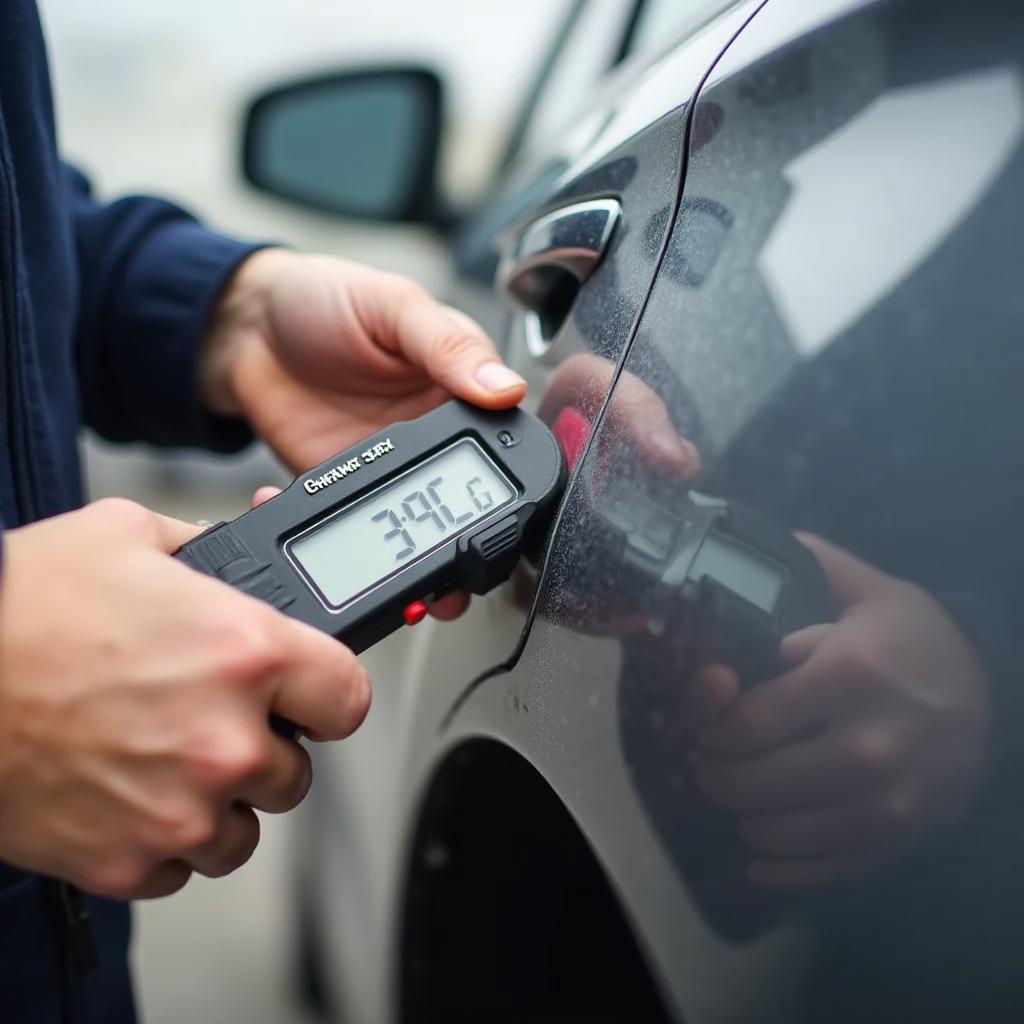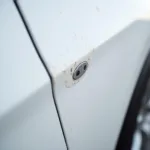Fixing those pesky dents and scratches on your car can feel like a costly trip to the auto shop. But what if we told you that some car body repairs can be tackled right from your own garage? That’s right, with the right tools, a bit of know-how, and a dose of patience, you can save some money and achieve professional-looking results.
This comprehensive guide dives deep into the world of DIY car body repairs. We’ll explore common issues, provide step-by-step instructions, and equip you with the knowledge to make informed decisions about tackling those repairs yourself.
Assessing the Damage: Know Your Limits
Before you grab your toolbox, it’s crucial to assess the severity of the damage. While minor scratches and dents might be manageable, significant structural damage requires the expertise of a professional.
Here’s a quick rundown to help you decide:
DIY-Friendly Repairs:
- Minor scratches and paint chips: These can often be addressed with touch-up paint and some polishing.
- Small dents without paint damage: Paintless dent repair (PDR) kits can work wonders on these blemishes.
- Bumper scuffs and scrapes: Depending on the material and depth, you can sometimes repair these yourself.
Seek Professional Help:
- Deep dents with creasing or paint damage: These usually require specialized tools and techniques.
- Damage to structural components: This compromises the car’s safety and should only be handled by professionals.
- Extensive rust: Addressing rust properly often necessitates sandblasting and welding, best left to the pros.
Essential Tools for DIY Car Body Repairs
Equipping yourself with the right tools is crucial for successful car body repairs. Here’s a list of essentials to get you started:
- Cleaning Supplies: Car wash soap, microfiber cloths, wax, and grease remover.
- Sandpaper: A variety of grits (e.g., 200, 400, 600, 1000, 2000) for smoothing surfaces.
- Masking Tape and Paper: Protect surrounding areas from overspray and sanding dust.
- Body Filler (Bondo) and Spreader: For filling dents and imperfections.
- Primer, Paint, and Clear Coat: Choose products that match your car’s paint code.
- Paint Spray Gun (optional): For professional-looking paint application.
- Polishing Compound and Pads: For a smooth and glossy finish.
Pro Tip: Invest in high-quality tools and materials for the best results.
Common Car Body Repair Techniques
Now that you’re familiar with the basics, let’s explore some common DIY car body repair techniques:
1. Repairing Minor Scratches and Paint Chips
- Clean the Area: Thoroughly wash and dry the scratched area to remove dirt and debris.
- Sand the Scratch: If the scratch is deep, use fine-grit sandpaper (e.g., 2000 grit) to smooth it out.
- Apply Touch-Up Paint: Carefully apply touch-up paint that matches your car’s color. Allow it to dry completely.
- Polish and Wax: Once the paint dries, polish the area with a polishing compound and a soft cloth to blend the repair. Follow with a coat of wax for protection.
2. Fixing Small Dents with Paintless Dent Repair (PDR)
- Clean the Dent: Ensure the dented area is clean and dry.
- Choose the Right PDR Tool: Select a tool that best fits the size and shape of the dent.
- Apply Pressure: Gently apply pressure from behind the dent, slowly working your way around the edges until it pops out.
- Inspect and Repeat: Inspect the area for any remaining imperfections and repeat the process if needed.
3. Addressing Bumper Scuffs and Scrapes
- Clean the Bumper: Wash and dry the bumper thoroughly.
- Sand the Damaged Area: Use sandpaper to smooth out scuffs and scratches. Start with a coarser grit (e.g., 400) and gradually move to finer grits (e.g., 1000, 2000).
- Apply Primer (if needed): If the plastic is exposed, apply a coat of plastic primer to promote paint adhesion.
- Apply Paint and Clear Coat: Apply several thin coats of paint, allowing each layer to dry completely before applying the next. Follow with a clear coat for protection and shine.
Safety First!
Working on car body repairs involves potentially hazardous materials and tools. Always prioritize safety:
- Wear protective gear: This includes gloves, safety glasses, and a respirator mask when sanding or painting.
- Work in a well-ventilated area: Fumes from paint and other chemicals can be harmful.
- Follow product instructions: Always read and follow the manufacturer’s instructions for all tools and materials.
Seeking Professional Help: When to Call in the Experts
While DIY car body repairs can save you money and be personally rewarding, some repairs are best left to the professionals.
Consider these factors:
- Severity of Damage: Extensive damage, structural issues, or rust require specialized equipment and expertise.
- Safety Concerns: Repairs that affect the car’s structural integrity or safety systems are best handled by professionals.
- Time Constraints: Car body repairs can be time-consuming. If you’re short on time, seeking professional help is a practical solution.
- Lack of Experience: If you’re unsure about a particular repair or uncomfortable tackling it yourself, don’t hesitate to contact a reputable auto body shop.
Looking for professional car body repairs in your area? Check out these trusted providers: car bodywork repairs at home kent, car body repairs burntwood, and car body repairs mobile. They offer a wide range of services to get your car looking its best.
Conclusion: Master the Art of Car Body Repairs
While DIY car body repairs can be a rewarding endeavor, remember that patience and attention to detail are key. By following the right techniques and using the proper tools and materials, you can achieve professional-looking results and keep your car looking its best for years to come.
Need expert assistance with your car body repairs? Don’t hesitate to reach out! We offer top-notch services in various locations, including car body repair aeres road and car body repair in newark grantham. Contact us today for a free quote and let us restore your car’s former glory.



